There are a select few movies I love so dearly, it's like they grafted themselves to my bones and continue to seep into my muscles, bloodstream, DNA, and straight into my soul no matter how old I get. Watching The Last Starfighter (released in 1984) is like re-connecting with a dear old friend.
(This post is a revised & updated version of something I wrote in 2014 for the film’s 30th anniversary.)
Any boy who grew up in the 1970s or ‘80s understands the impact that Star Wars had on our generation and the way we lived. For us, the school playground at recess and the backyards & basements of our homes were not merely steel structures, expanses of grass and cement or cozy rooms, but were in fact the corridors of the Death Star, the forest of Endor in the summer and the icy sprawl of Hoth in winter. That fictional universe somehow meshed with ours and we played and lived in it as if it were as real as the gravel beneath our size-5 shoes. It seemed to call us to a sense of adventure beyond our reality, but we reached out for anyway and pulled it close.
So it was, in the context of this frame of mind for me as a 9-year-old boy in 1984 that another little story captured my imagination as well. I was hooked before I even saw the film. The commercials on TV and the ad in the newspaper already sold me, and it was called The Last Starfighter.
This one was slightly different from Star Wars, in that it didn't take place exclusively in a galaxy far, far away — but brought a faraway galaxy and our own planet, the Heavens and the Earth as it were, together. By telling the tale of a boy who lives in a trailer park in California and is carried off to outer space and back again, it also showed how these two worlds depended on each other, and it brought the adventure home. It suggested the reality of that other world was not as far away as it seemed.
I first saw The Last Starfighter in a tiny theater with my dad “Up North” in Traverse City, Michigan, one warm summer day in 1984 with a bag of Twizzlers in my hand. It blew me away, and over 40 years later, it's still one of those films that’s locked me in its gravitational pull and stayed there.
One of the best things about the film I still obsess over now is the musical score composed by Craig Safan. It opens the film immediately, with its fanfare scoring the opening credits over a star field — a stylistic echo of films like Star Wars and Superman that came before it. After the credits, the music plays a softer version of the heroic fanfare as it segues into the movie. I still listen to the soundtrack often, and it stands alone as a moving collection of music which also brings the film to life.
But why else did this film speak to me as a young boy, and why am I compelled to keep writing about it today? The computer-generated effects, though ground-breaking for their time, seem dated compared to what we see these days. Like many films of the 80s, it's cheesy and campy, the villains are not particularly threatening, and they have a few silly one-liners of dialogue like "What do we do?" "We die." And of course there's Grig's ridiculous wheezy laugh — and his “wife-oid.” Many critics have written it off as a silly Star Wars rip-off, and this may be true, but as Gene Siskel admitted while agreeing with this sentiment, "it's the best one." And he's right.
On a sub-conscious level, there are many mythological motifs in the story, much like the Joseph Campbell/Hero's Journey-fest that even Star Wars was. It’s essentially The Hero’s Journey 101. Our hero Alex Rogan is called to adventure by a peculiar figure named Centauri, much like Luke Skywalker is called by Ben Kenobi, or young King Arthur called by Merlin. Centauri is even accused of using something called an "Excalibur test" to recruit young Alex into battle.
Like Skywalker and many other figures on the typical hero's journey, Alex refuses the call, but circumstances force him back to the stars to face his destiny regardless. His "excalibur" or lightsaber is in fact his Gunstar, and with his mentor/ally Grig, he descends into the labyrinth of a dark meteor, where he experiences a renewal & rebirth of his courage, slays the dragon of the Ko-Dan Armada and returns home with his elixir of life to finally take his beloved Maggie up to the stars.
There is even some Christ-o-morphic imagery here, of a savior figure thought to be dead due to the sacrifice of his earth-bound "beta unit", yet defeating death, resurrecting, returning to Earth for his bride (the Church) and ascending into Heaven. These themes and images speak to us of a larger mythic story happening underneath the surface.
There is also the idea of being called to an adventure greater than anything one can possibly imagine for their life. Alex has plans of leaving his trailer park, going off to greater things than his local city college, and coming back for Maggie so they can share the rest of their lives together. This ends up happening, but not according to his will or his plan for how he pictures it. There is a much bigger plan for Alex.
When all is said and done, there are "greater things in Heaven and Earth than are dreamt of in our philosophy" which know how to lead us on the path we're supposed to be on. We may think we know where we want life to take us, but then the universe may whisper (or sometimes shout) to us, "Let me show you a better way to get there."
The Last Starfighter may be a familiar tale, but the way that tale is told was surprisingly original for its time and it's still original today.
I would even venture to state that even despite its campiness — it’s a perfect movie. Not perfect in the same sense that Back to the Future or The Empire Strikes Back are perfect — but upon all weights and balances, perfect nonetheless.
Its perfection is in its sincerity, in that unlike so much of what studio-driven rubbish passes for entertainment these days, it's not trying to be anything other than what it is. Like Winnie the Pooh, it just IS.
When you learn more about how it was made, in particular how the team that drove the pioneering special effects invented techniques and wrote coding software for doing it using a super-computer the size of a refrigerator under an impossible deadline, it shines as a pure miracle.
It's a director-driven film. A writer-driven film. A community-driven film. A discovery-driven film, and a trust-driven film. It's a what-if-driven film made by loving people who were simply in the right place at the right time. All of this simply matters because it’s great fun.
…and because frickin’ DEATH BLOSSOM!
My deep, deep feelings about this silly little science-fiction movie for the past 4 decades — its music, its story, its characters, its community, its adventure — are summed up by the figure of Alex's little brother Louis…as he steps up to the Starfighter video game bathed in an ethereal white light….
…cranes his neck, watches the Gunstar ascend into the heavens, the music swells, and he shouts in delight. The boy who looked up.
You want to see a grown man cry? Watch The Last Starfighter with me.




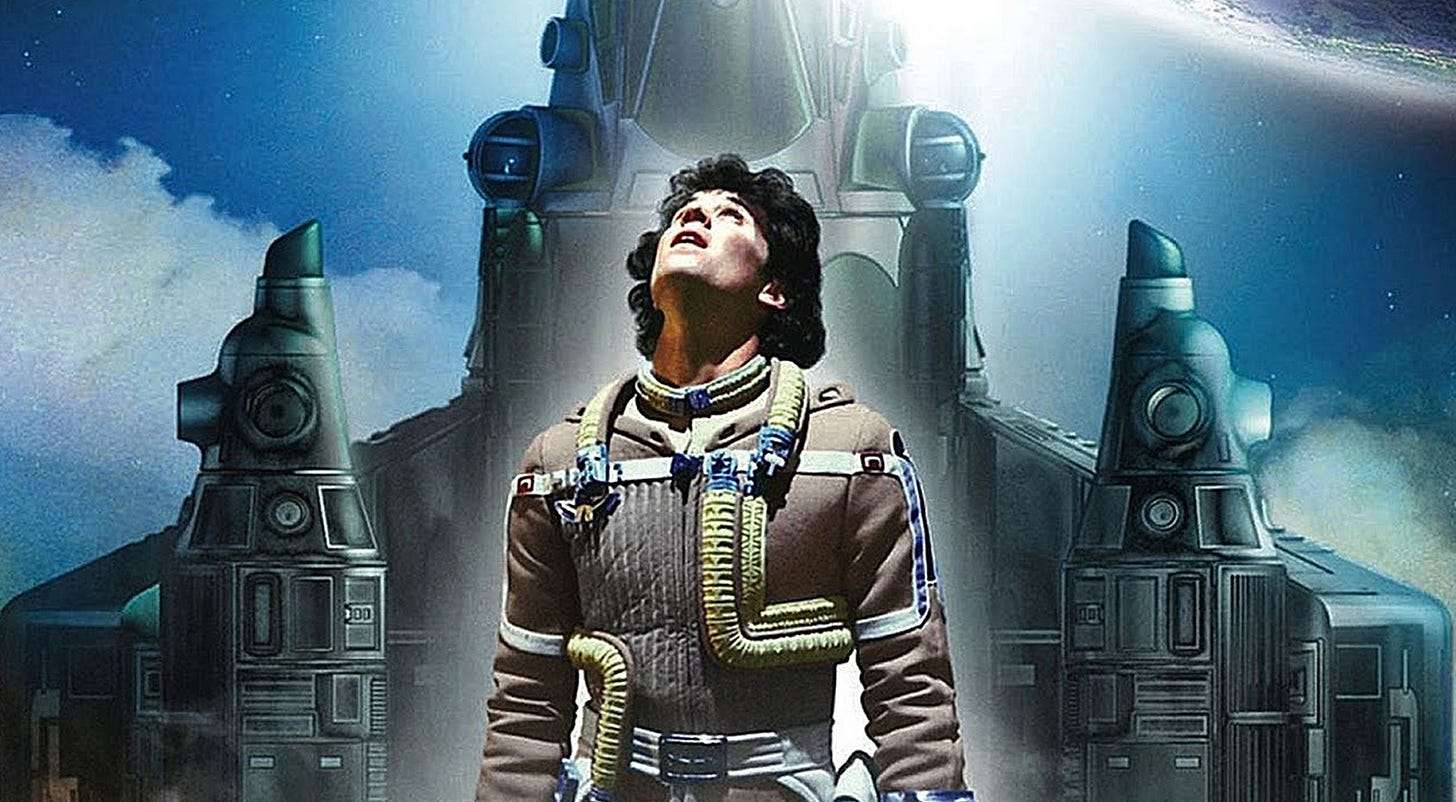
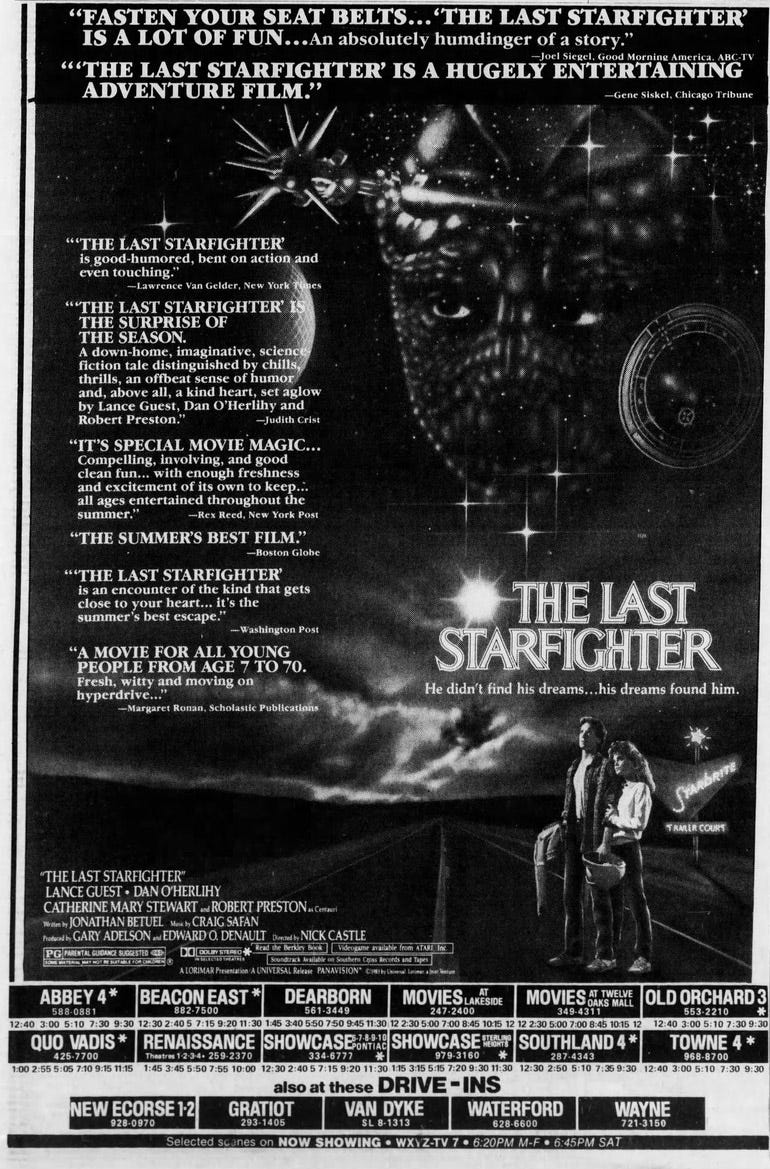
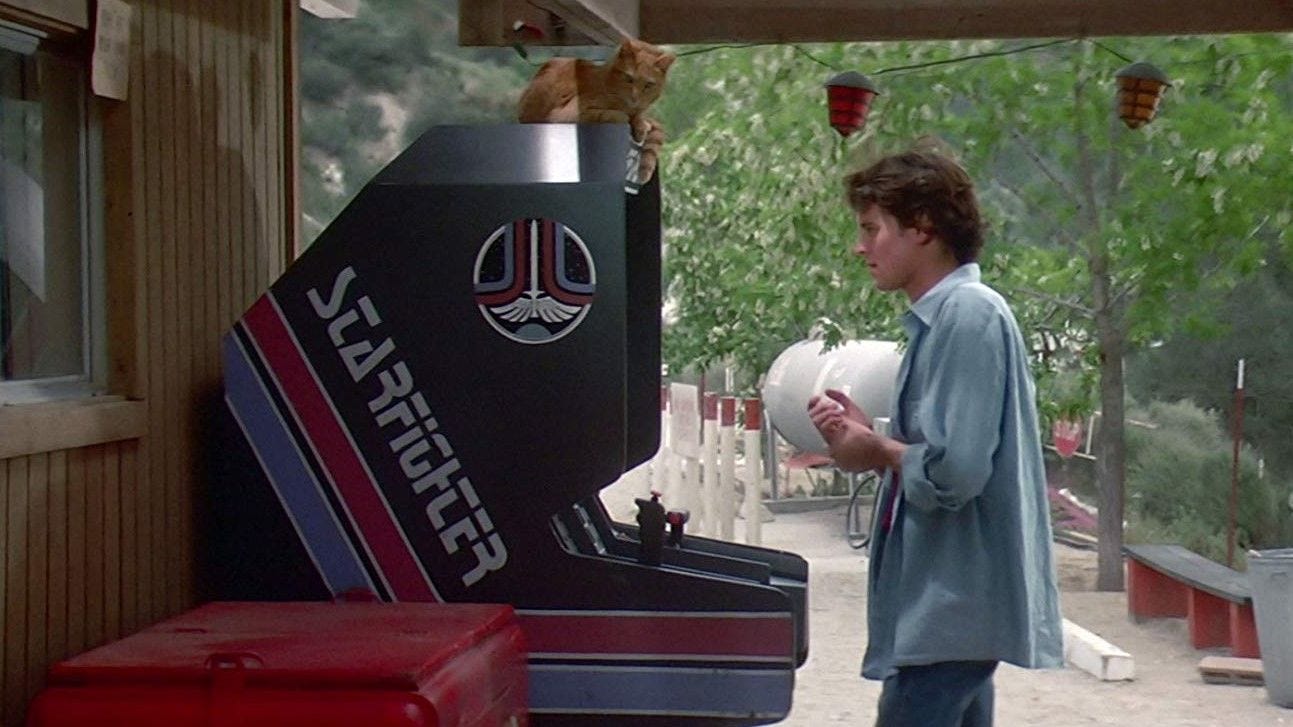
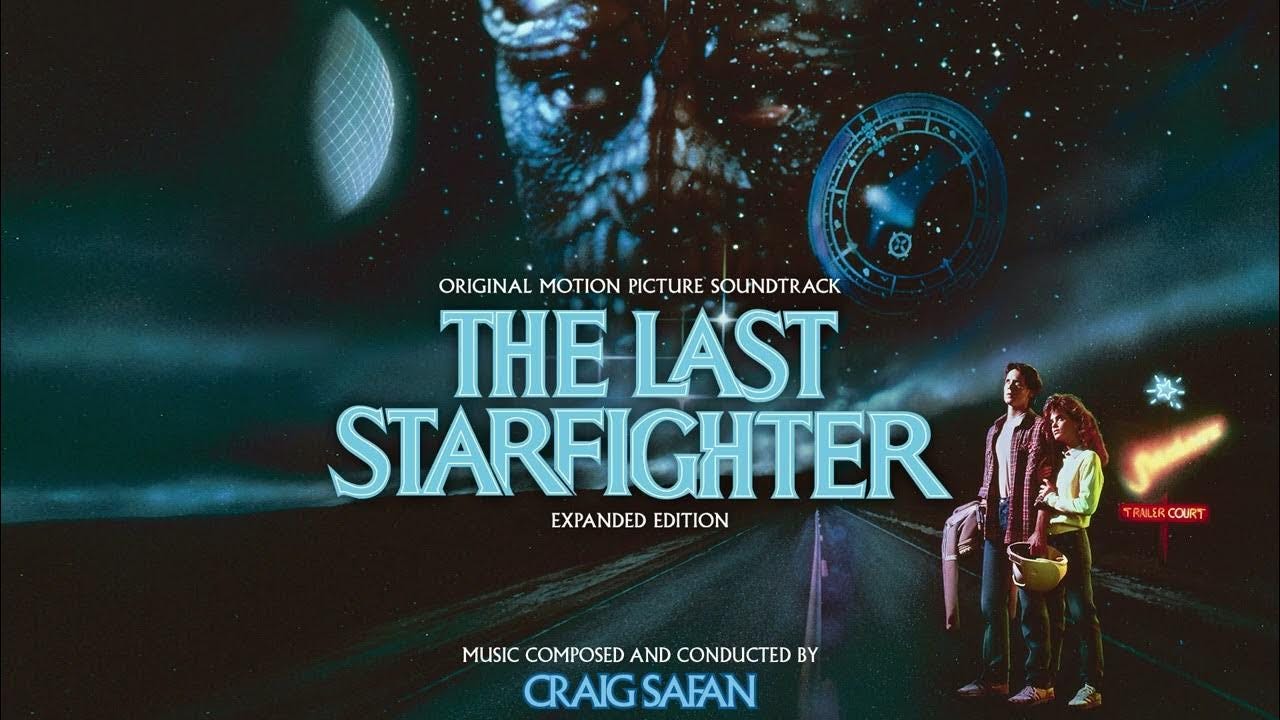
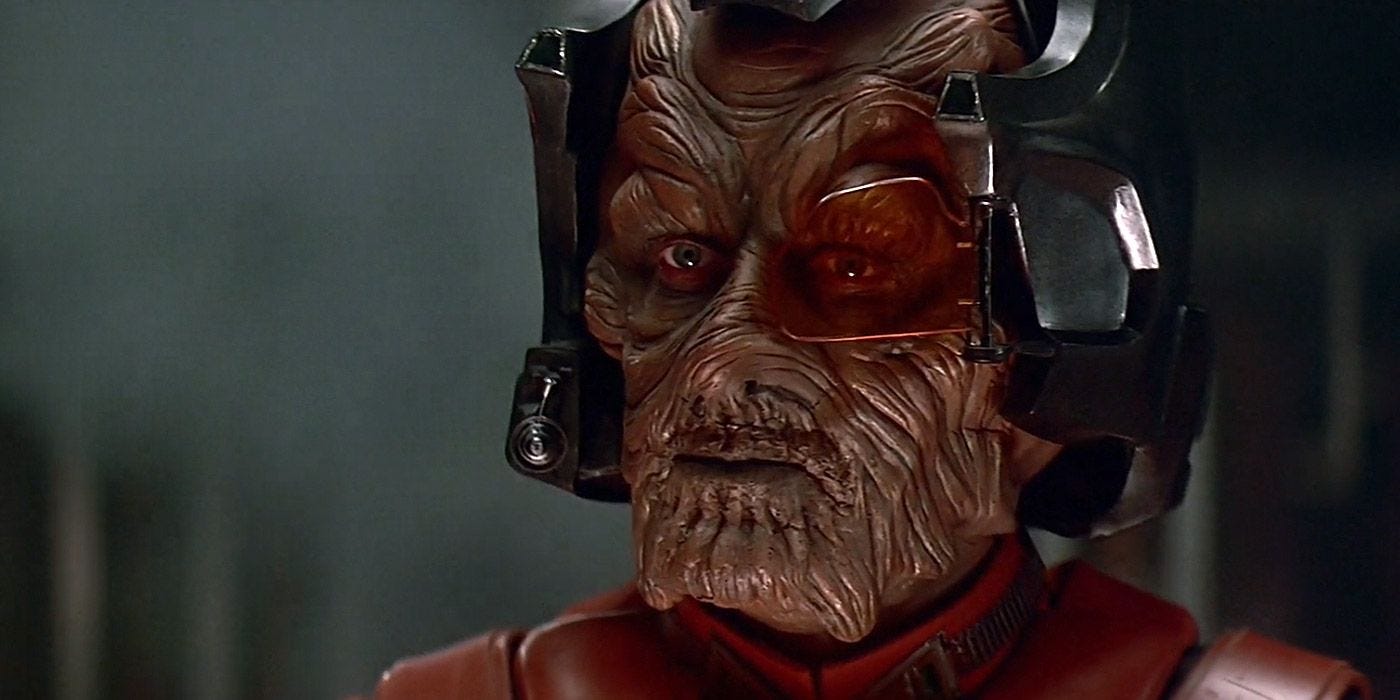


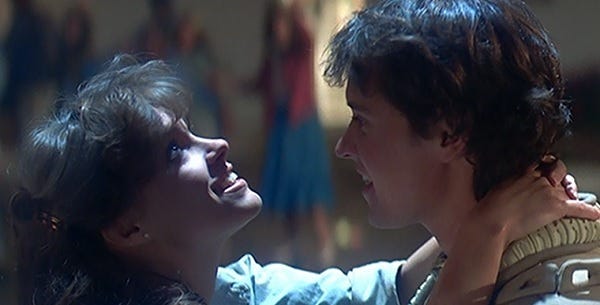
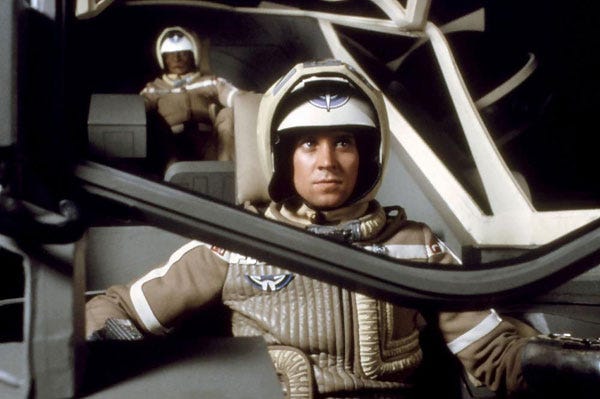
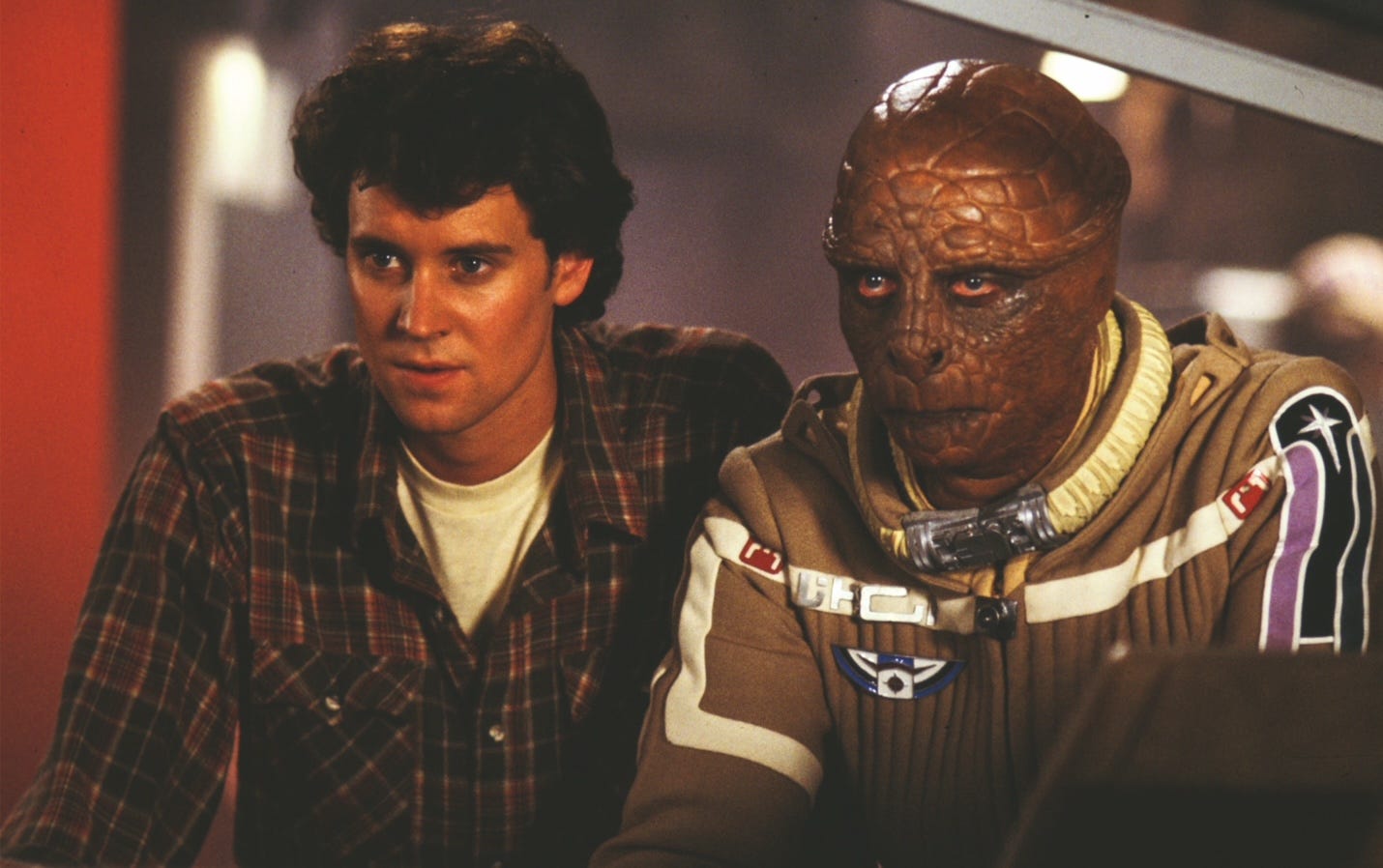

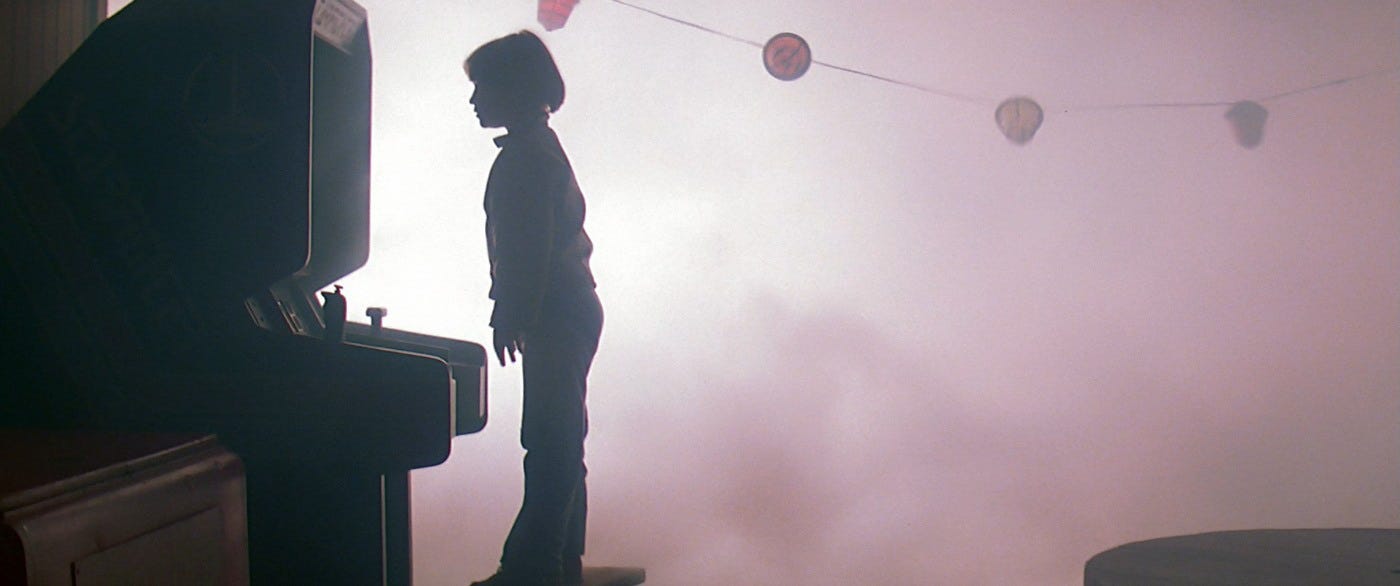
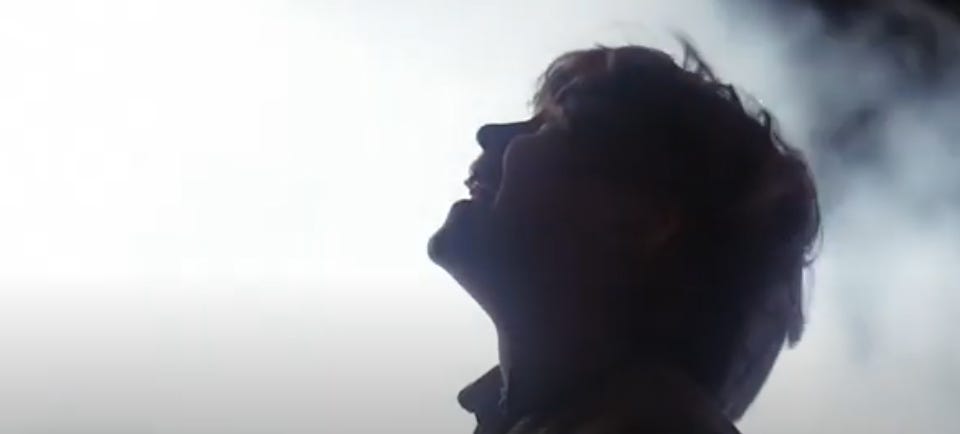
Thanks for reminding me of a great movie. I haven't thought of Last Starfighter in quite a while.